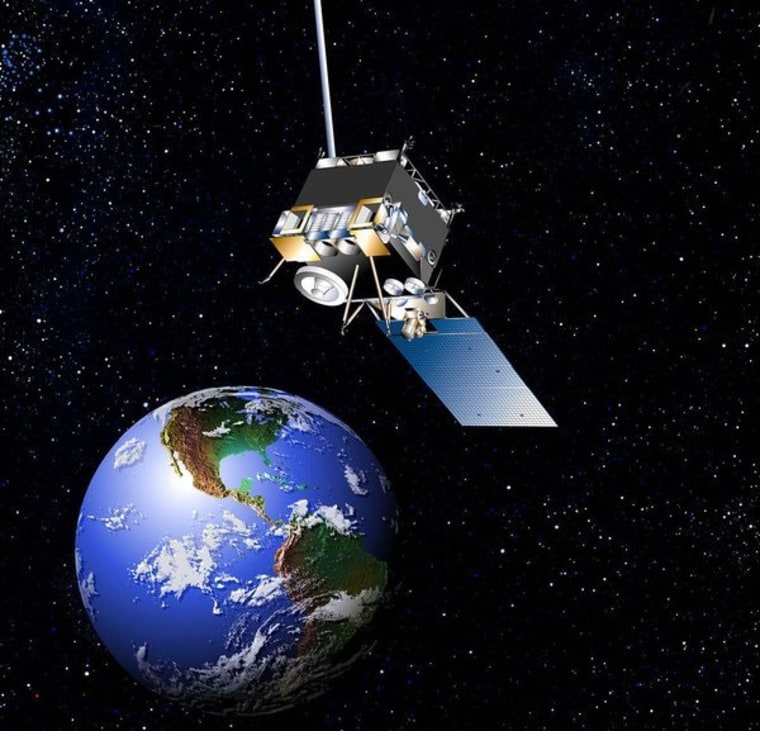A tiny space rock called a micrometeoroid is apparently to blame for temporarily knocking out a weather satellite that keeps an eye on the eastern United States, the National Oceanic and Atmospheric Administration says. The satellite was officially returned to normal operations on Monday.
The micrometeroid hit an arm for the solar array panel on GOES-East, also known as GOES-13, "knocking the satellite off its delicate, geostationary balance," NOAA said in a news release.
Engineers put the satellite in safe mode while they investigated the cause of the outage. A backup satellite was activated to supply imagery while GOES-13 was out of service. The investigators determined the space rock did not damage the GOES-13's instruments, or the satellite itself.
"Once again, NOAA has three, healthy geostationary satellites ready and able to track hurricanes, severe storms, floods and other dangerous weather conditions," Mary Kicza, assistant administrator for NOAA's Satellite and Information Service, said in the news release.
The return to operations was initially scheduled for June 6, but NOAA said it postponed the transition until Monday due to the onset of a Critical Weather Day and Tropical Storm Andrea.
The loss of GOES-13 in May marked the second time the satellite has malfunctioned in less than a year — it previously blinked out in September, prior to Hurricane Sandy, and took several weeks to repair. The problem then was a buildup of lubricant in the satellite's sounder instrument, NOAA said.
The failures are "indicative of the creeping problem that we are all worried about with our overall weather satellite infrastructure," Marshall Shepherd, president of the American Meteorological Society, told NBC News in May.
Shepherd, who also is a professor and research meteorologist at the University of Georgia, noted that the satellite fleets that meteorologists use to monitor severe weather and generate forecasts are aging. Replacements are scheduled to launch beginning in 2015, but there is growing concern that between now and then "that we are going to end up with gaps in our coverage," Shepherd said.
NASA experts estimate that millions of tiny space rocks and human-made debris orbit the Earth in the range of operational satellites and the International Space Station. This May, astronaut Chris Hadfiled posted a photo of "bullet hole" from one on station's solar array on Twitter.
John Roach is a contributing writer to NBC News. To learn more about him, visit his website.
